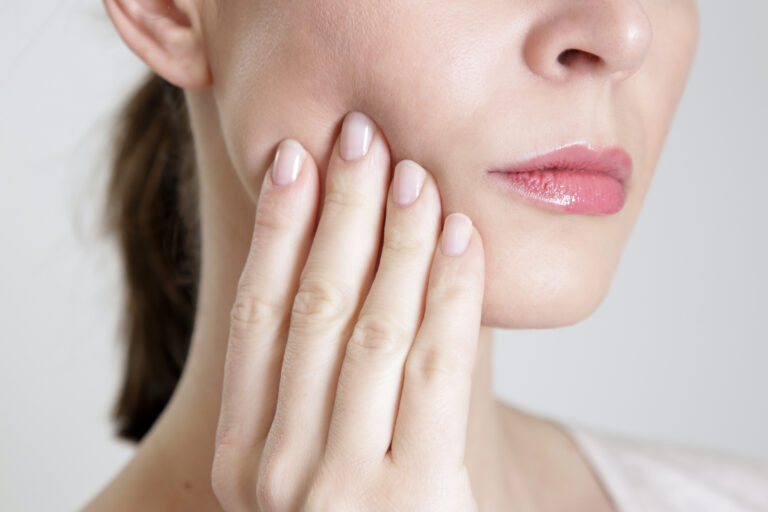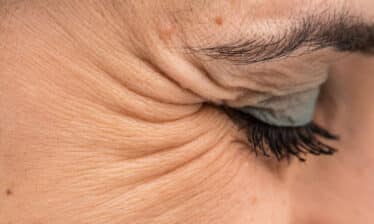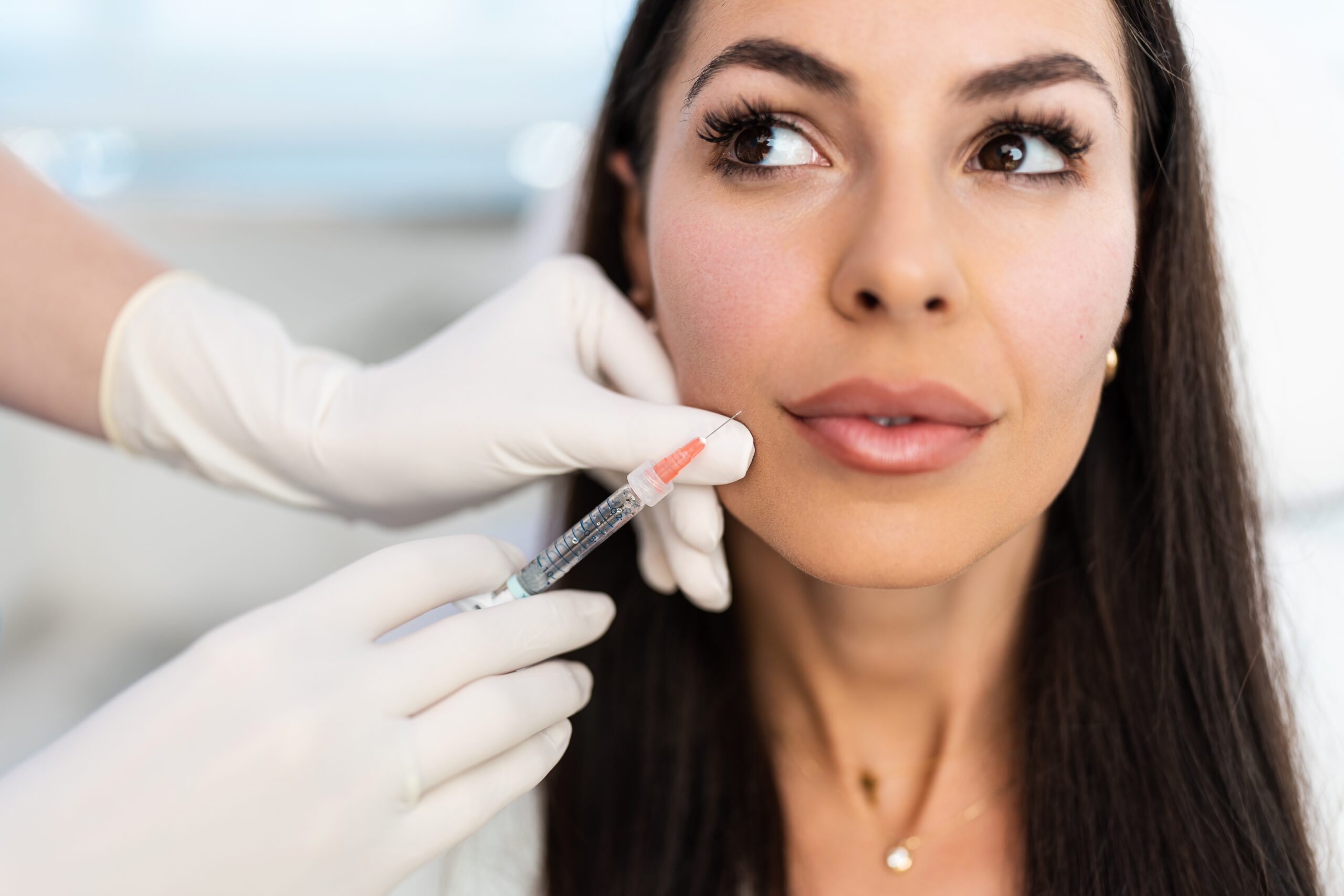Botox injections are a popular treatment used to relax facial muscles and can be used for various cosmetic and medical solutions. Botox is a brand name for the neurotoxin botulinum toxin type A, though your doctor may use another brand such as Dysport, Jeauveau, or Xeomin. According to the American Society of Plastic Surgeons 2020 Statistics Report, botulinum toxin type A injections were the most popular minimally invasive procedure in 2020, with over four million procedures performed.1
One new way that Botox injections may be used is for TMJ treatment to relax the muscles and relieve tension in the jaw caused by TMJ dysfunction.
What Are TMJ Disorders?
TMJ disorders are caused by a combination of factors and can be painful and inconvenient. TMJ dysfunction occurs when your temporomandibular joint (TMJ) stops working properly.
The TMJ joints are on either side of your jaw and work like sliding hinges to attach your jaw to your skull. You can feel them by pressing lightly on the back of your jaw just beneath your ears and opening and closing your mouth. TMJ disorders cause pain and stiffness in this joint and the muscles controlling jaw movement.
Symptoms of TMJ Disorders
The symptoms of TMJ disorders can be frightening and painful. They include:
- Pain or tenderness in your jaw
- Pain in one or both of your jaw joints — this is especially noticeable when opening and closing your mouth
- Ache or pain in and around your ear
- Pain while chewing or difficulty chewing
- Facial pain or aching
- Locking of the jaw joint that makes it difficult to open or shut your mouth and limits your range of motion
- Change in how your upper and lower teeth fit together
- Dizziness, ringing in the ears, or hearing loss
- Clicking or grating sound or sensation in your jaw when you chew or open your mouth — although if there is no pain or limitation of movement in your jaw, then this symptom alone typically does not require treatment
TMJ disorders can also cause headaches and often occur alongside other medical conditions like back pain, trouble sleeping, fibromyalgia, and irritable bowel syndrome.2
Causes of TMJ Disorders
The TMJ is a sliding hinge made of bone and cartilage separated by a shock-absorbing disk to keep its movement smooth. TMJ dysfunction occurs when this disk erodes or moves out of alignment. TMJ dysfunction can also be caused by damage to your cartilage (for example, from arthritis or excessive teeth grinding) or by damage to your joint from a high impact.
In many cases, the cause of TMJ disorders is unclear.
Using Botox for TMJ Disorders
For some people suffering from painful TMJ disorder symptoms, Botox injections may bring relief. It is currently a treatment option for some medical conditions, such as migraines.
However, you should remember that the use of Botox as a treatment for TMJ disorders is in an experimental stage and has not yet been approved by the U.S. Food and Drug Administration.
Some studies have researched the effects of Botox injections in reducing pain, but more research is required to provide any clear conclusions about Botox as a treatment for TMJ disorders.3
Procedure
Botox treatment for TMJ disorders is easy and relatively quick, usually taking no longer than 30 minutes. Your healthcare provider can complete the procedure in an outpatient setting. Generally, three or more sessions will take place over several months and may be needed on an ongoing basis.
Depending on your symptoms, your healthcare provider will inject Botox into your jaw, temple, and forehead muscles. The number of injections needed will vary with each patient. The Botox will relax the muscles and hopefully relieve the tension causing TMJ dysfunction.
You can resume regular activities immediately following the procedure and expect to feel results in 1 to 2 days following treatment.
Side Effects
There are a few common side effects following treatment of TMJ disorders with Botox:
- Pain, bruising, or redness at the injection sites
- Headache
- Respiratory infection
- Flu-like symptoms
- Nausea
- “Fixed” smile from the paralyzing effect of Botox — this might last six to eight weeks
After treatment, remain upright and avoid massaging the injection sites to keep the toxin from spreading. You can use a cold pack or numbing cream to help with the temporary pain from the injections.
Make sure to speak to your healthcare provider about possible side effects or complications before receiving treatment.
Other TMJ Treatment Options
Many TMJ disorder symptoms go away on their own without treatment. However, for more severe or persistent symptoms, there are a variety of treatment options available:
- Eating soft foods to relieve tension
- Using heat or cold packs and exercises to stretch and strengthen the jaw muscles
- Taking anti-inflammatory over-the-counter medications or pain relievers, such as ibuprofen
- Using mouth guards, oral splints, or other methods to reduce jaw clenching, grinding teeth, or nail biting
- Physical therapy or massage
- Behavioral health treatment, such as working with a psychologist to reduce stress and improve healthy coping skills
- Prescription medications such as anti-anxiety or antidepressant medications, anti-seizure medications, or opioids
- Acupuncture
- Transcutaneous electrical nerve stimulation
- Prolotherapy to stimulate the body’s repair response
- Arthrocentesis
- Arthroscopy can help your healthcare provider make a diagnosis, remove adhesions, or reposition the cushioning disk
- More invasive surgical interventions — these are generally recommended as a last resort4
Learn More About Botox for TMJ Disorders
Botox injections are used as a treatment for various cosmetic and medical problems. They are currently being researched as a possible TMJ treatment and may offer some pain relief by relaxing the facial and jaw muscles.
It is important to speak to your doctor or healthcare provider if you think Botox injections may be the right choice for treating your TMJ disorder symptoms.
My Filler Treatment can help you stay informed on the various fillers and neurotoxins available, so you can be confident about the right treatment when visiting your local injector.
SOURCES:
- American Society of Plastic Surgeons: “2020 Plastic Surgery Statistics Report.“
- National Institute of Dental and Craniofacial Research: “Temporomandibular Disorders.“
- National Institute of Dental and Craniofacial Research: “Temporomandibular Disorders.“
- National Institute of Dental and Craniofacial Research: “Temporomandibular Disorders.“






